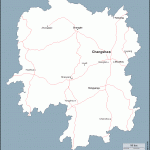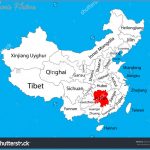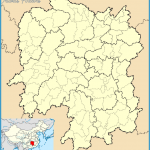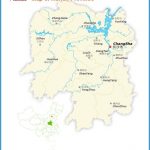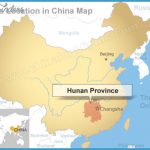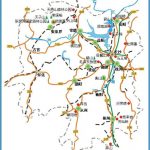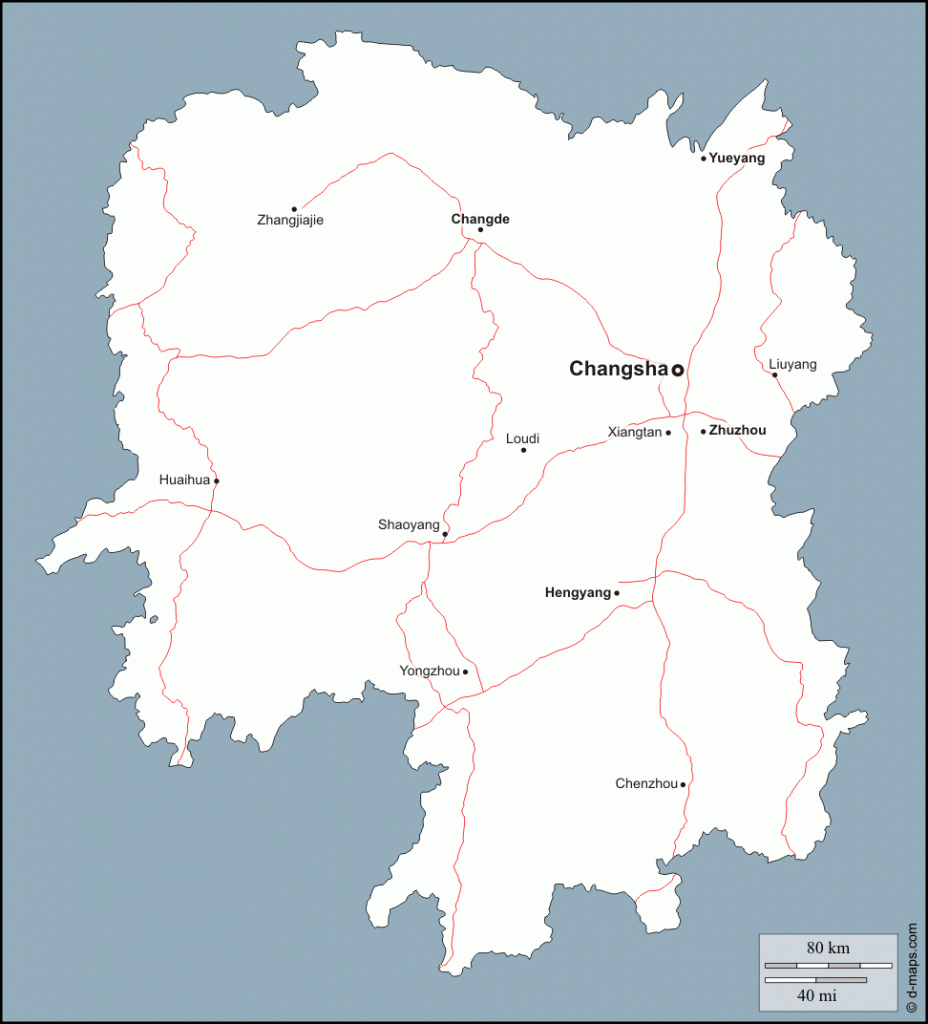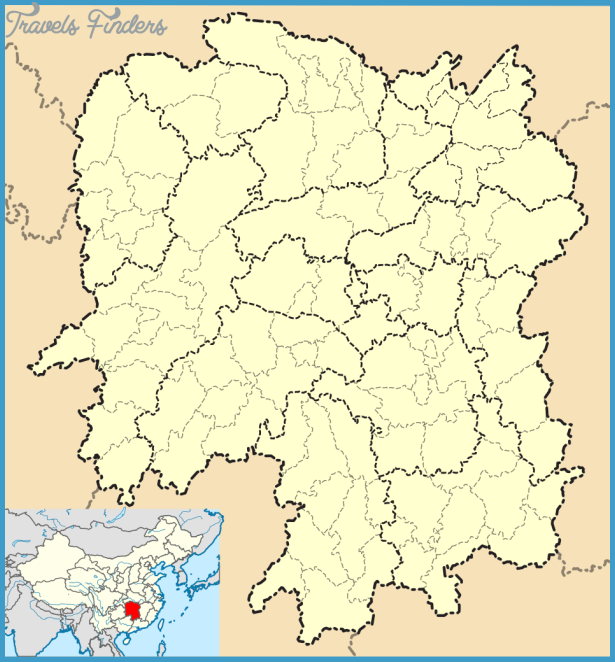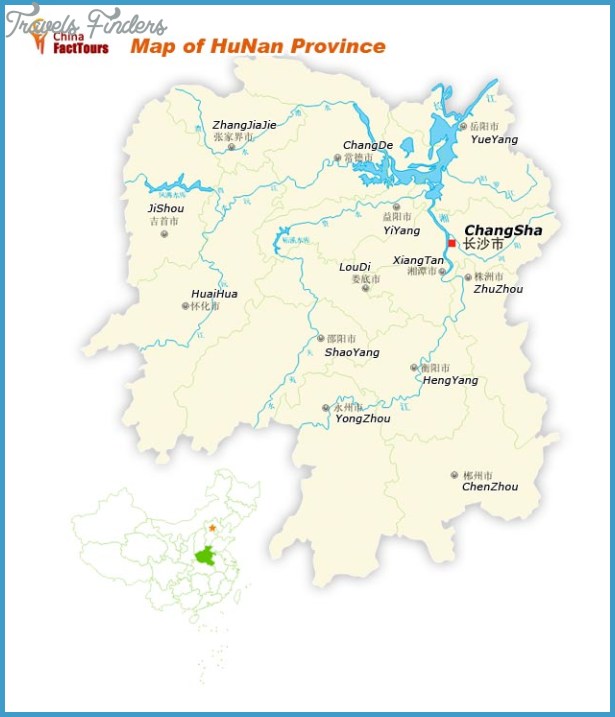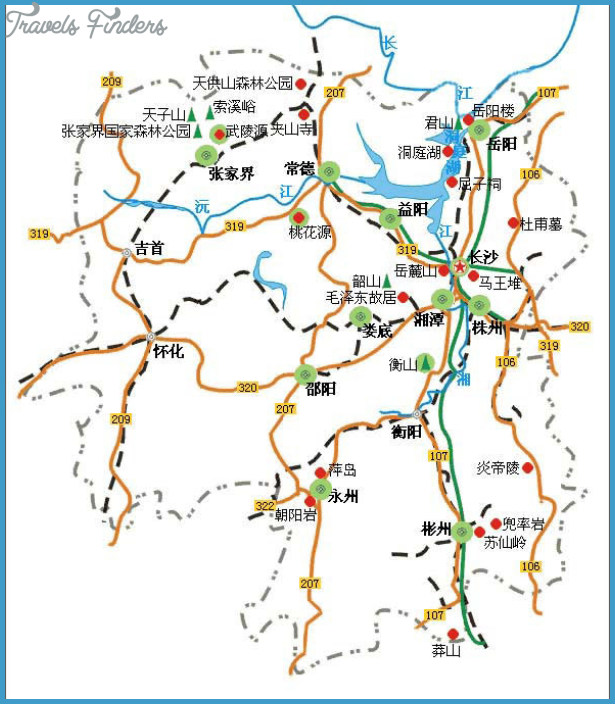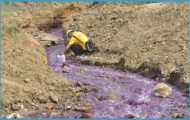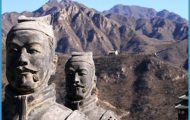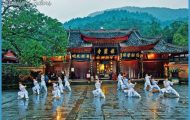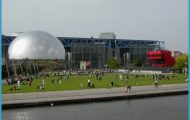Area: 210,OOOsq.km/81,OOOsq. miles Population: 62,090,000. Capital: Changsa
The province of Hunan lies in Central China, mainly to the south of Lake Dongting Hu (its name means “south of the lake”), between 108°47′-114°13’E and 24°38′-30°08’N.
Hunan basically falls within the catchment area of Lake Dongting Hu, which lies along the northern edge ofthe province, and its affluent rivers Xiangjiang, Zishui, Yuanjiang and Lishui. The north is flat, while the west, east and south parts of the province are hemmed in and indented by hilly uplands and mountain ranges.
The climate is continental, but heavily influenced by monsoons. Winters are short and bring plentiful precipitation in the form of both rain and snow. Summers are hot and moist. The average temperatures in Changsa are 30°C/86°F in July and 6°C/43°F in January.
At the time of the Warring Kingdoms (475-221 b.c.) Hunan belonged to the Kingdom of Chu. From the 3rd c. onwards Han Chinese migrated over and over again into the region, which was inhabited by Miao and Yao. From the time of the Yuan and Ming dynasties (13th 17th c.), when Hunan and Hubei were amalgamated to form the province of Huguang, Hunan played an important role in providing rice for the country, resulting in the proverb “When the harvest has been good in Huguang, the whole country prospers!” Hunan became an independent province in 1664 and as the home region of Mao Zedong was a focal point for the revolutionary movement in the 20th c.
Hunan is rich in minerals, particularly in tungsten and antimony ore, as well as manganese, lead, zinc, tin, copper, coal and phosphates. The most important industrial towns lie along the Xiangjiang. Hunan is, however, still largely an agricultural province and counts as one of China’s main rice-producing areas, the crop occupying approximately a half of all the land available for cultivation (one fifth of the province). Tea, cotton, maize, cereals, soya beans, sorghum and sweet potatoes are the other main crops. Timber production (pine, maple, bamboo, cedar and spruce) is also important. Economy
As well as the capital Changsha (see entry), it is worth going to Hengyang (see entry) with nearby Hengshan, one of thefive holy mountains of China, as well as Xiangtan and Yuegang (see entries). Places to visit

